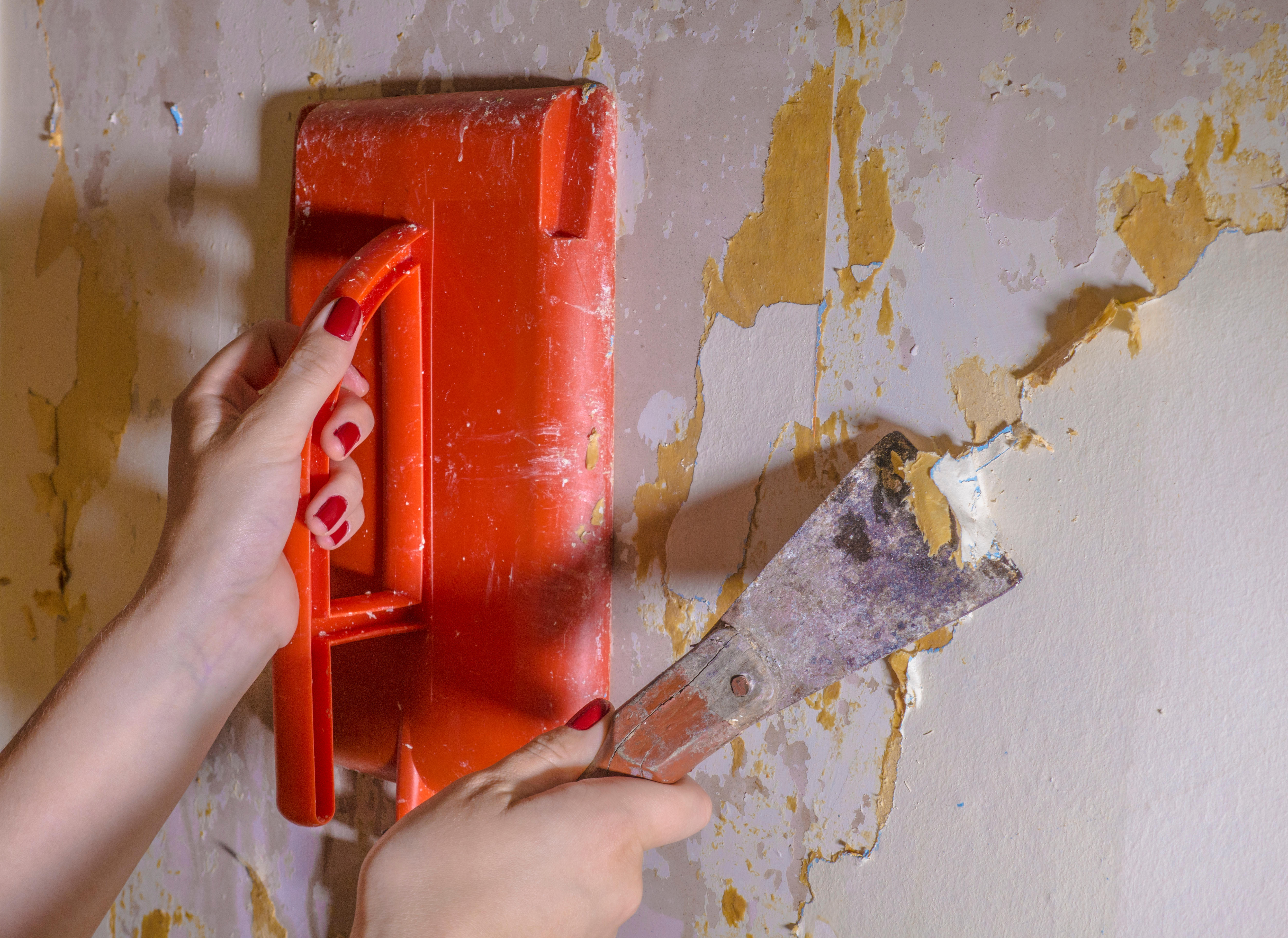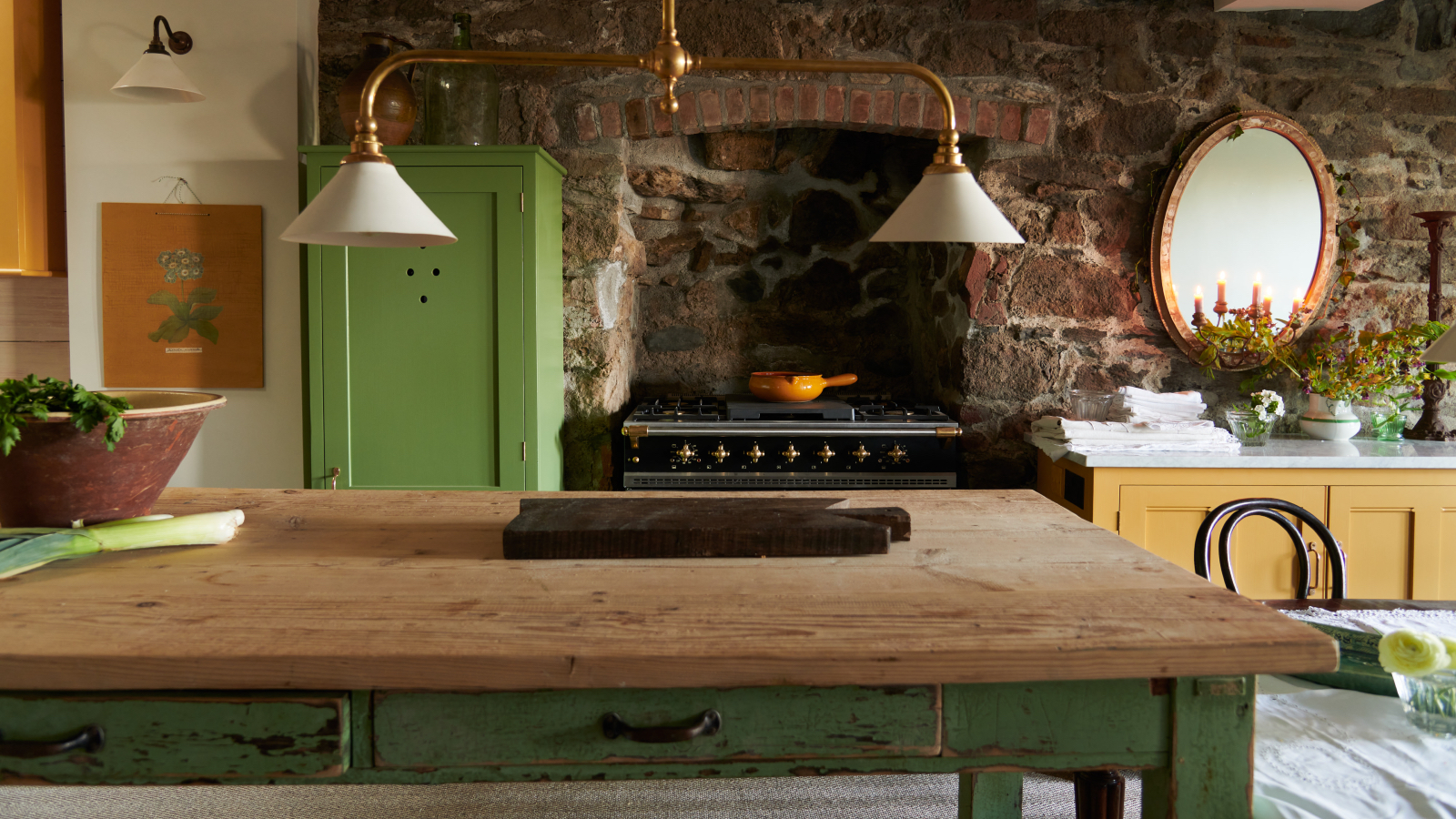How to use a wallpaper steamer – 5 steps for getting pro results
Find out how to use a wallpaper steamer to make the task easy and speedy


Knowing how to use a wallpaper steamer speeds up the task of stripping walls no end, bringing you closer to your goal of fresh new decor for your room.
Whether you’re just tired of looking at the same old four walls, or the wallpaper is scuffed or dated, it opens up the possibilities for a brand new look.
The task of removing wallpaper is well within the grasp of even a DIY novice, and being confident about how to use a wallpaper steamer can make it a faster job. Our guide explains the steps to follow.
How to use a wallpaper steamer
It’s possible to paint over wallpaper, but if you’ve fallen for a new design and are in the know about how to wallpaper, a steamer makes removing the old wallpaper first an easier task.
‘Just be cautious if you think the plaster behind the wallpaper is not in good condition,’ says Lucy Searle, global editor in chief of Homes & Gardens. ‘Otherwise, though, it’s the best way to strip stubborn wallpaper.’
Below, we explain how to use a wallpaper steamer.
Shopping list
To follow these steps, you will need the following items:
• Wallpaper steamer – we like the Wagner Spraytech 0282018 from Amazon
• Safety goggles
• Protective gloves
• Step stool, trestles or stepladder
• Dust sheets or plastic sheeting
• Painter’s tape
• Wallpaper scraper
• Craft knife or wallpaper scoring tool – like this one from Amazon
• Bucket Sponge Cloth – we like these Microfiber Cleaning Cloths from Amazon
• Tray or wooden board (optional)
• Bin liners
1. Prepare the room
Move furniture out of the room or put it in the center and cover with a dust sheet. Put down dust sheets or plastic sheeting to protect the floor. Remove any picture hooks or nails from the walls.
Next, tape pieces of plastic over light switches and electrical outlets. If the wallpaper runs beneath switch plates, you may want to loosen them, but switch off the relevant circuit in your fuse box first, checking it with a socket tester or voltage meter.
‘Open doors and windows for a good flow of air to improve ventilation and prevent the room steaming up,’ advises Kirsty Mole, decorative home category manager, B&Q.
2. Check the wallpaper
For successful steaming, you need to know whether the type of wallpaper you’re taking off is going to be a tricky customer. Many wallpapers are porous and the steam will be able to get to work straightaway. But vinyl wallpapers and lining or embossed papers that have been painted over will resist the steam.
If this is the case, use a craft knife to score the paper in horizontal strips from top to bottom. ‘Don’t press too hard when scoring, you want to cut into the paper but avoid damaging the wall beneath,’ says James Greenwood, wallpaper specialist at Graham & Brown.
Alternatively, run a wallpaper scoring tool all over the surface to perforate the wallpaper. This ensures that steam can get through the wallpaper surface to loosen the paste behind.
And before you start to score vinyl, note that some vinyl wallpapers are designed so that the vinyl surface can be peeled away leaving the backing in place. If the backing is intact, you can simply wallpaper over it, but if it’s coming away, it’s best to use the steamer to remove it entirely.
3. Set up the wallpaper steamer
Read the manual carefully, to check the safety guidelines and set up the steamer. Place the steamer flat on the floor or on a tray or spare piece of board to protect the floor. Plug in the steamer (ideally into a socket in the next room, if the cable is long enough).
Fill the reservoir with water up to the fill line. To speed things up, you can use warm water from the tap (pour it in from a jug). Close the cap and attach the hose.
Switch on and wait until the water boils and steam is produced. This may take around 10 to 15 minutes but don’t leave the steamer unattended. Put on your protective gloves so you won’t get scalded. While the hose is warming up, hot water can dribble from the steamer plate, so rest the plate on a tray or in a bucket.
4. Start steaming the wallpaper
Once it’s merrily steaming, hold the steamer plate flat against the wall. Try 10 seconds for the steam to do its work but if the wallpaper isn’t softening up to 30 seconds may be needed. You don’t want to wet the wall unnecessarily, so leave any stubborn portion and come back to it later. The jury’s out over whether it’s easiest to work from top to bottom, or the other way. But if you start at the top, any water that drips down will loosen the paper beneath.
Use a stripping knife to get beneath the loosened paper and strip it from the wall. ‘While you’re working, keep the knife as flat as possible, otherwise you could inadvertently gouge the wall,’ says James Greenwood.
Now you can get into a routine, holding the steamer to the next section and scraping the portion you’ve already steamed with your free hand.
As you work, use the scraper or damp cloth to take off any remaining scraps of paper. If they dry on the wall, you’ll have to steam again to loosen them.
Check the water level in the steamer regularly. If the steamer goes quiet, it’s run out of water – you don’t want this to happen as it can automatically cut the power and could damage the steamer. Switch it off and allow to cool before refilling it.
5. Deal with stripping small areas
Use the small steamer plate supplied to work around any awkward areas. Even though you’ve taped them over, avoid steaming close to switches and outlets and take great care as water could drip from the steamer plate onto them (see step 1, above).
6. Tidy up and get ready for next time
After you’ve finished, wash down walls with a damp sponge, checking for and removing any remaining scraps with your scraper.
Wait until the steamer is cool before loosening the cap and emptying the reservoir. It pays to look after your steamer. Clean the steamer plate with hot soapy water, washing off any scraps of wallpaper – it’s a pain to remove them once they’ve dried on. Wipe the hose and allow any water inside to drip out. Depending on how much it’s used, the heating coil in the steamer can scale up like a kettle especially if you’re in a hard water area, so follow the instructions for descaling to keep it working for longer.
Stay mess-free
Damp, sticky wallpaper will stick to your shoes, the dust sheets and get in a right old mess, especially if it dries on. Be a tidy worker and fill a bin bag with the stripped paper as you go to avoid getting in a tizz.
Do you put boiling water in a wallpaper steamer?
Don’t put boiling water into a wallpaper steamer. The reason? It could prevent the steamer thermostat from working correctly. It is possible to use warm water to make things quicker, but always pour it in carefully preferably using a jug.
How long does it take for a wallpaper steamer to heat up?
It can take around 10 to 15 minutes for a wallpaper steamer to heat up. It works like a kettle, so you need to allow time for the element to heat the water. ‘When you’re buying, look for a model with a thermostat as well as a pressure-relief valve in case this were to fail for safe working,’ advises Lucy Searle.
Sign up to the Homes & Gardens newsletter
Design expertise in your inbox – from inspiring decorating ideas and beautiful celebrity homes to practical gardening advice and shopping round-ups.

Lola Houlton is a news writer for Homes & Gardens. She has been writing content for Future PLC for the past six years, in particular Homes & Gardens, Real Homes and GardeningEtc. She writes on a broad range of subjects, including practical household advice, recipe articles, and product reviews, working closely with experts in their fields to cover everything from heating to home organization through to house plants. Lola is a graduate, who completed her degree in Psychology at the University of Sussex. She has also spent some time working at the BBC.
-
 9 things you can clean with glycerin – this cheap and natural cleaner is perfect for indoor and outdoor use
9 things you can clean with glycerin – this cheap and natural cleaner is perfect for indoor and outdoor useFrom patio furniture to silverware, this hydrating and gentle cleaning agent will work miracles
By Ciéra Cree Published
-
 Martha Stewart's houses – inside her most iconic properties, from Cantitoe Corners to Turkey Hill
Martha Stewart's houses – inside her most iconic properties, from Cantitoe Corners to Turkey HillThe lifestyle guru built her legacy around her homes, some of which are the most recognized homes in modern American history – we explore her portfolio
By Megan Slack Published
-
 7 dorm room organizing rules for less clutter and more space
7 dorm room organizing rules for less clutter and more spaceExperts offer their top tips for creating a well-organized dorm room, no matter the size, space, or layout.
By Ashley Chalmers Published
-
 How to maximize storage in a small or shared dorm room, according to pro organizers
How to maximize storage in a small or shared dorm room, according to pro organizersFind out all the hidden storage zones you might never have noticed
By Ashley Chalmers Published